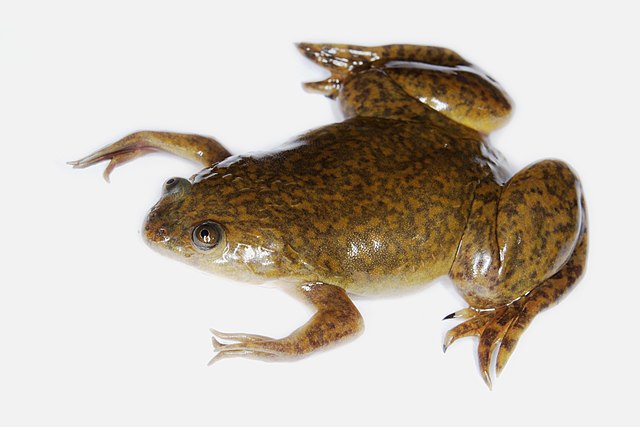
The African Clawed Frog (Xenopus laevis) is native to southern Africa, and now is widely distributed around the world. This frog is largely aquatic, and does not move easily on land. Its body is flattened and streamlined, with eyes on top of its head, no tympanum (circular ear-like organ), and fully webbed hind feet. The body is gray to olive, with splotchy mottling and there is a visible lateral line. The tadpoles of X. laevis have barbels, resembling those of catfish. Adults reach 5 to 14 cm. Xenopus laevis was widely sold in the pet trade, used for medical research, and used for pregnancy tests. In the 1930s, it was found that urine from a pregnant woman would cause a female Xenopus to produce eggs, The frogs were easy to keep in captivity, and the test was widely used into 1960s, when chemical tests for human chorionic gonadotropin were developed, Many of the un-needed frogs were released from medical labs as well as aquaria. Populations were established in Wales, southern England, Mainland Europe, Chile, Ascension Island, Mexico and several locations in the United States. Populations in some locations, including one adjacent to the Potomac River in Virginia were eradicated; others have died out. In Californica, scattered populations are established in the vicinity of San Francisco, and many locations in southern California. Xenopus laevis was established in the Santa Clara River in 1977, It was later found to be established in the estuary of the Santa Clara River (1994-1995). In experiments it tolerates brackish water up to 14 PSU (40% seawater) for several days, and 7 PSU (20% seawater) indefinitely. This frog was found to be a predator on the endangered Tidewater Goby (Eucyclogobius newberryi). Other estuarine occurrences are known from the Goleta Slough in Santa Barbara, and the Tijuana River.